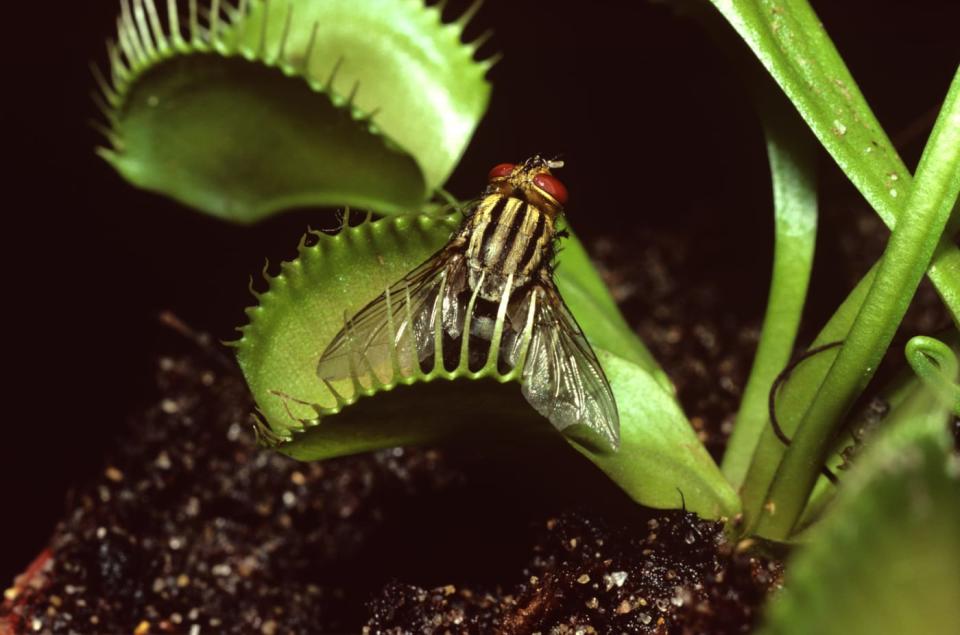Venus flytraps are far from 'dumb'
New research explains the plant's digestive process and how it can identify a meal from a false alarm.

When I was a kid, I had a Venus flytrap that lived all of about a week. I couldn't figure out why it hadn't eaten the morsel of raw hamburger I'd put in its "mouth," and it died of starvation shortly after the beef grew white fuzzies on it. Turns out I hadn't triggered the hairs inside the plant's jaws that cause them to close and its digestive system to start producing the enzymes that break down food. In a recent research paper noticed by the BBC, scientists from the University of Würzburg discovered that the amount of times those follicles are triggered corresponds to what the carnivorous plant's guts do, in addition to how it absorbs nutrients from captured-and-digested prey.
With each successive touch, the plant does more and more: two strokes causes the mouth to snap shut, while additional strokes indicate the size of the prey (bigger victims tends to twitch more) and causes the plant to produce a proportionally larger amount of "prey degrading hydrolases." Essentially, this ensures the plant only produces the amount of enzymes it needs on a per-meal basis, and prevents wasted production resulting from, say, a flower petal or some other non-food item grazing its maw. More than that, the production of a sodium channel that the plant uses to absorb said nutrient from its food gradually increases during this process as well.
It's a complex response that goes pretty deep into the plant -- not just a reflexive one. You could even call it smart. Cool. Now, if you'll excuse me, I think I'm going try adding a Venus flytrap to my current menagerie of houseplants.
[Image credit: Auscape via Getty Images]

